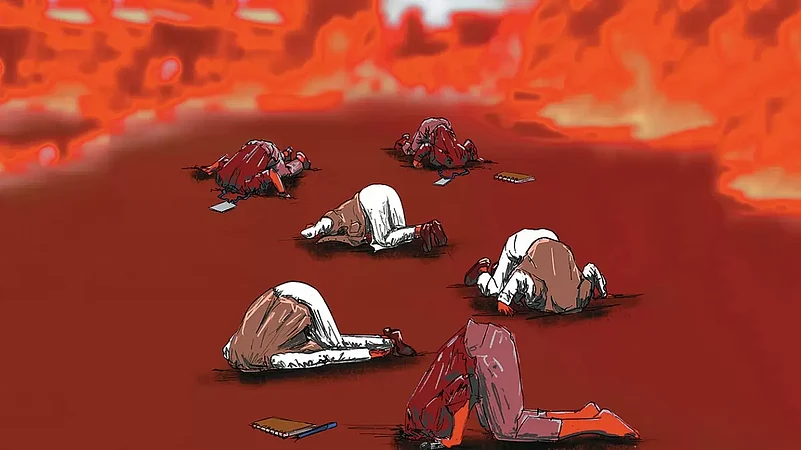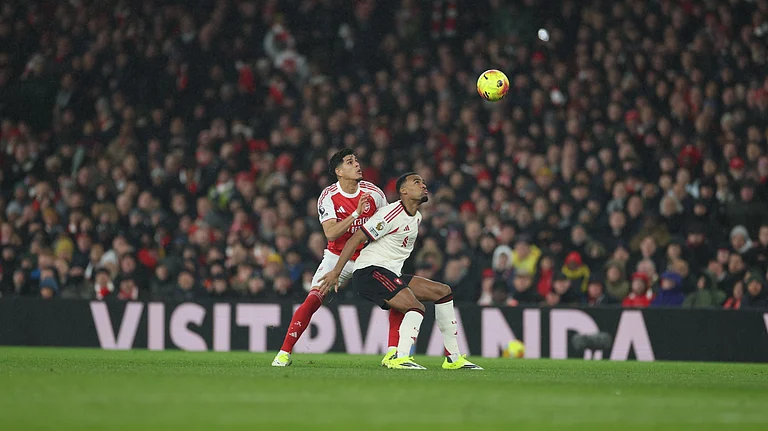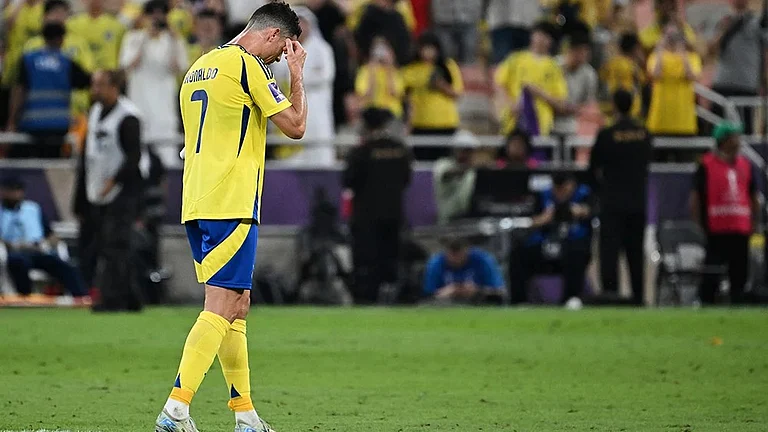Mourning the loss of more than a hundred dead and thousands displaced, Kuki and Meitei people, the two communities at loggerheads in Manipur, have been forced to parade their losses to an ignorant rest of India. And to a Union government that pretends in public to be uninformed and unfazed.
Within Manipur, the armed groups of both communities, the political and civil society leaders, and two societies that live a legitimate mix of anger, fear and anxiety, battle it out. Both sides rightly believe the State is not there to fend for them. And that it is too pulverised by the politics of those who run the State to focus on speedily drawing the societies back from the conflict.
They all know that the license to impose violence has never been the exclusive domain of the State in Manipur—armed groups of many shades and vintage have always shared that license with the government. In fact, the State has actively distributed that license to some in order to break the monopoly of others.
In this game of crafting a nation-state, of continuous negotiations over the strategic distribution of the right to commit violence, the State’s own armed agencies have always been perceived as players and contestants, not neutral umpires that impose peace.
Both communities have known these truths for generations. The rest of India has always preferred not to acknowledge Manipur’s age-old truths. Acknowledging them means accepting with shame that some geographical locations in India are governed by Constitution lite.
Neither charged community’s advocates have the time or desire to set the record straight right now. It’s wartime. This civil war is not to reset either community’s fundamental relation with the rest of the nation. It is to renegotiate the lines of control over the State’s several functions by the leaders of the two communities.
They renegotiate these lines knowing that the one which was supposed to be a peacemaking arbiter—the BJP in power over the Union and the State—has been foolish enough to try and convert its electoral dominance into its political and ideological hegemony, as academic Avinash Paliwal explains with better insights than most observers. (I desist from filling this space with a presentation of background or recanting the horrendous happenings, hoping readers will go to Paliwal’s and other writings to do so).
Communication warriors of both communities compete. Ranging from academics to newborn Twitter and Instagram soldiers located outside the battlegrounds, either mobilised or charged by the moment, they try to set a partiality-laced context of the civil war for the perplexed country.
Each side claims it is wronged more and harmed worse. One community, the Kuki, is forced to prove its Indianness and patriotism. The other, the Meitei, is forced to hide its unease and let advocates mumble about its umbilical relation with the mainland’s Hinduism, even if it at times requires the community to be falsely associated with the delusional persecution of Hindutva.
The rest of India, waking up to Manipur, scans the visible and violent symptoms. Reading the ailment is neither their habit nor convenient upon their time. Too much time would be needed to invest in reading the historical records. They find it easier to fix the Manipur story into tropes that fit well with their everyday world and their ideological corners in a religiously and politically polarised mainland. It’s Hindutva versus religious minorities. Or it’s one omnipotent majoritarian community’s evil hegemony over a permanently oppressed minority. Or it is the aggrieved Hindus fighting back against others.
All these tropes demonise entire communities. It infantilises them as warring, primitive societies. It conforms with the racial bias that informs the imagination of India’s northeast. And yes, most people living in the rest of India only imagine the region. They don’t know it. Even rudimentarily.
Sitting in the ‘rest of India’ it’s hard to imagine a world where religion is an attendant element but not the primary parameter creating identities. Where a community may be the marginalised in one geography but is in hegemonic control of the situation some miles away. Where in their respective areas of dominance, the political actors of each community may hold strategic command with the might of sophisticatedly armed militia to back them up.
It is hard to acknowledge that there are these citizens of India whose lives are woven with many threads that are not from the mainland Indian yarn. That their homelands do not have shared histories with the geography that sits west of India’s chicken neck.
To empathise with Manipur’s current tragedy is humane, simple and easy. It’s also tweetable. It fits into 400-word hot takes, short video reports and instant opinions which feed the ever-hungry Internet-based mediascape. People are being killed, women raped and families displaced by the thousands. It should stop. Period.
But to understand how we got here, empathy is only an essential and not a sufficient condition. Understanding requires acquiescence of Manipur’s historical realities. That would come from looking, hearing and reading the people of Manipur before they got into the current conflict. When they had space to speak, contemplate, ruminate and express themselves freely.
It is unfair to tell them to talk now in the middle of an ethnic conflict and then complain that no one from either community is ‘telling the whole truth’ or is not ‘biased’. The tight-knit societal fiber, the need for personal safety and heightened insecurities guide them even when they want to share.
What would you hear if you went into the archived rich treasure troves of their stories? That there are overlapping and contested aspirations of three sets of large communities while only two are at loggerheads this time. Over resources, lands, the shared future and political arrangements to access these. That all of them are marginalised racial and social minorities in India and they know it well. So they play the cunning underdog’s role. The underdog that knows the rules are not fair. Their social contract with the State is not built on the fairness and equity that the Constitution requires. The history of nation-building in their region has dealt them a bad hand and they have to make the best of it.
This, they all know—eventually they have to live cheek by jowl with each other. The empathetic Indian’s gaze will soon shift to the next great Indian tragedy show.
Behind the curtain, their leaders—political, social and the armed ones—would wrestle for a settlement that is not entirely based on justice. It will be a political and pragmatic settlement. At first, a temporary peace that provides hope for a durable one.
Some of the new realities will craft that temporary truce and curtail the hope of durability.
While the BJP is in power in Delhi, it will continue to sow ideological agendas to attain long-term political hegemony. The State’s own ambitious political, social and armed leaders from different communities will have no choice but to play in this new terrain of money, power and imported ideologies. Their cynicism will have to unfortunately match that of the masters in Delhi. It will be moderated only by the region’s essential need for a self-respecting identity separate from that of the mainland’s.
The moral culpability of the current Manipur chief minister, N. Biren Singh, is undeniable. There are fair questions being asked about his role and responsibility in twisting the political and social contests between communities into an armed conflagration. The questions less asked but as relevant are about the deals that the Union government, the BJP and its affiliates cut with non-State actors across communities to gain electoral power.
N. Biren Singh may have been the Manipur politician who fronted them to emerge as chief minister and then played them more cynically to become a regional satrap but politics in India’s northeast has always been ‘double engined’—anchored by Delhi, driven by the State’s ambitious.
The hue of the political party in power in Delhi is not of consequence. It being in power is. Whoever governs Delhi, with rare exceptions, governs the politics of the region. The dominant contractor economy with Delhi as the ultimate dispenser of monies ensures it.
Then there are factors that the people and even the most powerful regional actors will have only a marginal handle on as they go looking for a temporary truce. The flourishing narcotics trade. The gun running. The overflowing migrants from the raging conflict in Myanmar. Geopolitical interests of the Union government and other countries in Myanmar’s fractious civil war. And, these are fairly big influences to navigate.
The principles of justice, unfortunately, will not be used to peg down the peace settlement. They would have been if India’s practice of its Constitution in the region was more accommodating of the societal and historical dynamics. It hasn’t been and no one is expecting that to change. The settlement would emerge, hopefully followed by acknowledgements of wrongs and eventual reconciliation. That is what is needed for the people of Manipur to heal and recover.
There are enough examples from Manipur and other states in India’s northeast of such reconciliations bearing fruits. They were not achieved as performance for the rest of the country. But as a quiet exercise, away from the sight of the rest.
The question is, as a relative from Manipur said, would such a settlement, reconciliation and healing require two to three years, or would the State be callous enough to let it take a decade? Or even longer?
I am willing to bet the culpable in the Union government or those in the BJP’s central leadership running it would not have to pay any cost for the loss, death and destruction they have overseen in Manipur. Again, there is historical evidence to favour my unfortunate and ugly wager.
Dear reader, in writing this, I eschewed describing the misery and loss of our people living the conflict. It’s much more painful to do. And futile. It will generate mere empathy from you, I fear. I borrowed this space to cajole you to derive an understanding.
In our private spaces, we do share our stories mixed with sadness, anger and anxiety. Every passing day.
We pray.
(Views expressed are personal)
(This appeared in the print as 'A Durab;e Settlement')
Nitin Sethi is a journalist. He has family, friends and loved ones in Manipur





















